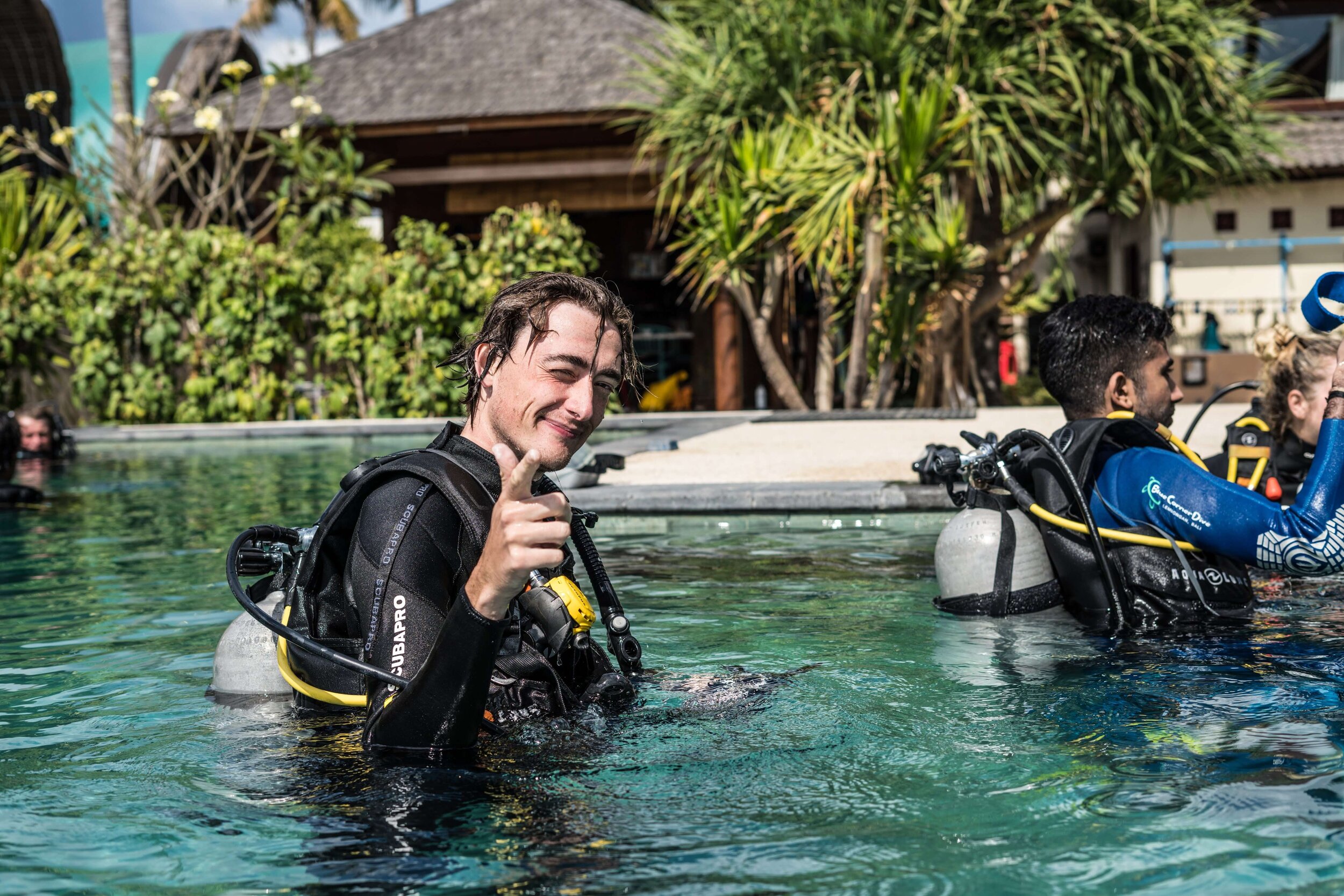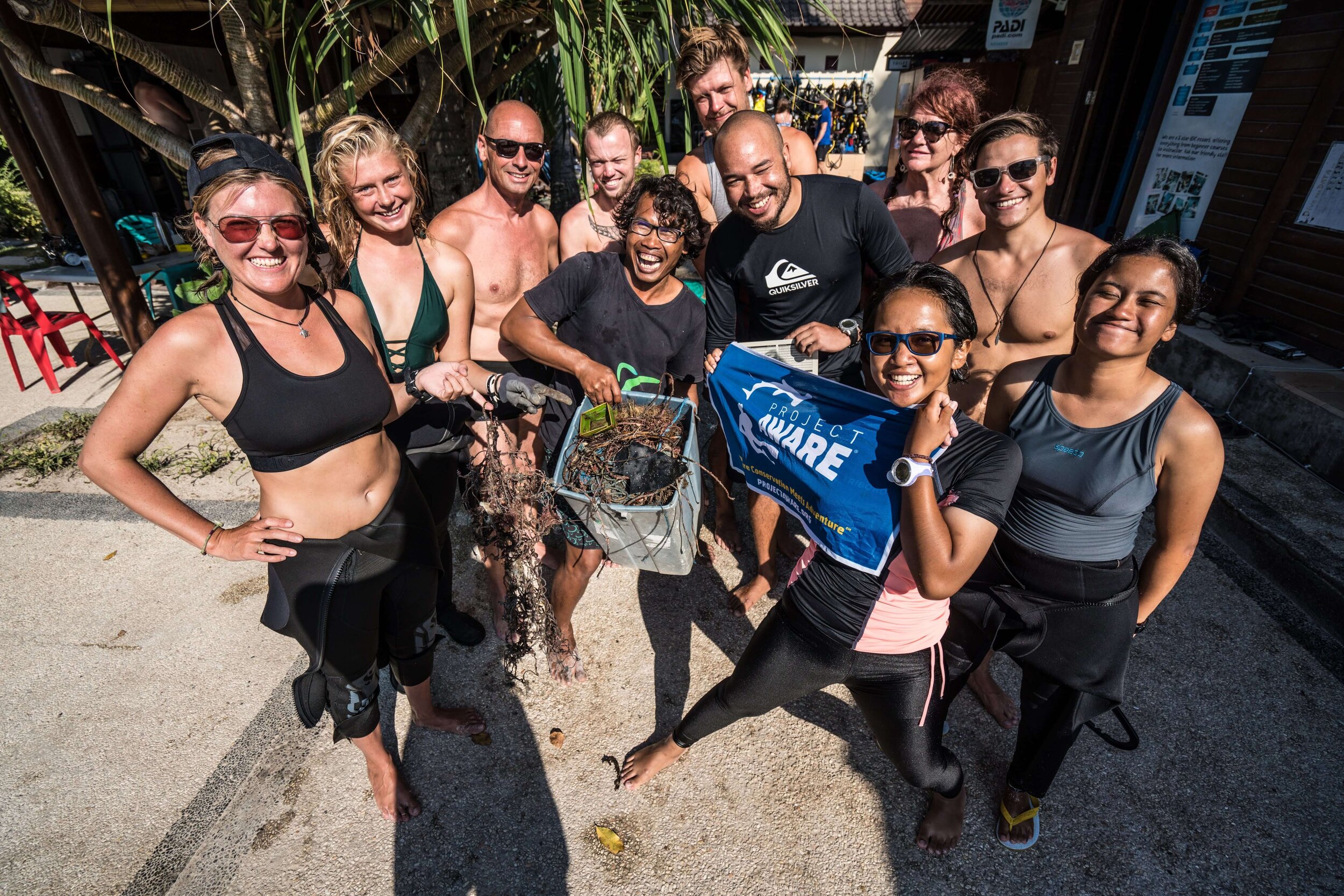PADI Instructor Development: The Pros and Cons of Teaching Skills in Mid-Water
When you took your PADI Open Water Course can you remember which skills you completed while stationary on the bottom and which you practiced in mid-water? Neutral buoyancy is probably the first skill that comes to mind when you think about learning in mid-water but do any others? Now try to answer this question, can you remember the last time your mask flooded during a dive and you were resting on the bottom?
When teaching PADI courses the primary concern is following and meeting all PADI standards, and for some skills, the Instructor Manual clearly stipulates whether a skill should be conducted while on the bottom or mid-water, but this is not the case for all skills. So what are the pro’s and cons of opting to teach skills in mid-water? Read on to find out more…
Buoyancy Control
Good buoyancy control is generally agreed upon as being the factor that distinguishes between a good diver and an excellent diver. Teaching skills in mid-water encourages students to handle problems while maintaining neutral buoyancy until they are able to repeat the skills and their buoyancy control becomes second nature.
Currents and Surge
When teaching a skill mid-water in an area where there are currents – such as when diving in Nusa Lembongan, practicing the skill means practicing while on the move. While this may sound more challenging for students it’s actually often much less stressful than trying to maintain a position on the bottom in current and surge. Of course, when diving Lembongan, we are diving from boats which pick-up divers at the end of the dive. In shore diving situations when an instructor needs to return to a predetermined exit point, drifting may not be a safe option or possibility.
Marine Life
When students are learning to dive they are becoming familiar with the equipment and fins can be cumbersome and students can easily underestimated the length of the fin behind them. This can result in kneeling students making contact with, damaging and even breaking nearby corals. When teaching mid-water, contact with the reef can be reduced. When diving Nusa Penida and Lembongan there are numerous sloping reef sites which have shallow reef tops making both mid-water and stationary options available.
Real Life Experience
Thinking back again to when your mask last flooded, it was probably while you were swimming around. A student who can confidently clear a flooded mask in a stationary position is not guaranteed to be able to handle the situation while on the move. By practicing skills during the PADI Open Water Course in mid-water, student divers are learning to overcome problems which might realistically occur after they are certified.
Developing Confident Divers
Divers who continue to dive after taking their Open Water certifications are usually divers who feel confident underwater. Knowing that they can complete a skill in mid-water will give a new diver an increased sense of confidence that they can handle situations whenever they arise.
So does this mean that a diver who can complete skills in mid-water will be a better diver than one who completes the skills on the bottom? And if so, should skills be taught in mid-water whenever possible? Several factors need to be taken into consideration before deciding how and where to conduct a skill:
1. What does the relevant PADI Standard stipulate regarding the skill? PADI standards must be adhered to first and foremost.
2. Can the student complete the skill on the bottom first? Asking a student to complete a skill in mid-water may bring about increased confidence but if the student is unable to complete the skill successfully the reverse effect could occur, creating a sense of unease in the student.
3. What are the student’s physical capabilities? Is teaching the skill mid-water appropriate? In some cases, it may be necessary to complete a skill in mid-water if the student has a physical condition which makes kneeling on the bottom uncomfortable or not possible.
4. What are the dive conditions on the day? If there is strong surge then a mid-water option is often easier than fighting to stay still on the bottom.
5. Where and how did the student complete the skill in confined water?
6. How big is the group and how well can they be kept together? How many certified assistants are available and what are their roles?
7. Which course is being taught? There is a big difference between asking a Search and Recovery Specialty to complete a knot tying exercise while neutrally buoyant versus asking an Open Water Student to clear a mask in mid-water.
8. What is the objective?
9. Apply good judgment and err on the side of caution.
How to Develop Judgment and Decision Making
As a PADI Instructor, you will face many decisions regarding individual situations on every course. Always apply good judgment and if in doubt, reach out to your local PADI training office for advice.
Develop your own skill set as an Instructor. At Blue Corner Dive in Nusa Lembongan and our neighbouring Island of Nusa Penida we offer advanced PADI Instructor Courses including Master Scuba Diver Trainer, Specialty Instructor and the PADI IDC Staff Instructor. By being in involved in one of our Instructor Development Courses on Lembongan or Nusa Penida you’ll develop your own awareness and gain first-hand insights from our Course Directors.
For more information about advancing your professional scuba diving qualifications, or joining one of our PADI Instructor Development Courses in Nusa Lembongan, fill in our online contact form and we will get right back to you.





